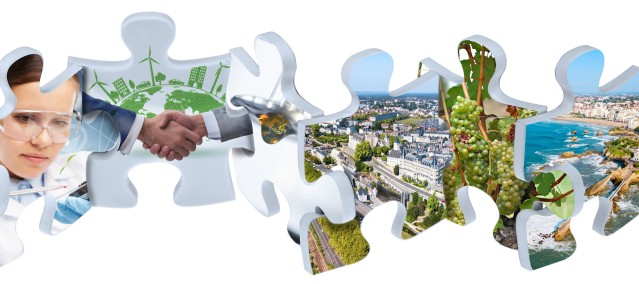Partners are the Heart of E2S UPPA’s Ambitions
12/16/2019
The E2S UPPA project, led by the consortium composed of UPPA, Inria and INRAe, relies on the quality of partnerships around the energy and environmental transition. A strategy that rises to the challenge.
“If we want to participate in the revitalization of our region and be at the forefront of energy and environmental issues, we need to increase the number of collaborations. Partnerships are one of the driving forces behind our project,” says Gilles Pijaudier-Cabot, executive director of E2S UPPA.
Obtaining the national I-Site label in 2017 is indeed largely due to the consortium’s determination to further strengthen its ties with local stakeholders and research organizations such as the CNRS, which joined E2S UPPA in 2018.
Towards a diversification of collaborations
UPPA relies on a solid experience. Its research laboratories have long maintained strong links with the outside world.
In this respect, ISIFoR, labeled Carnot Institute since 2011, has played a key role in recent years in the field of geo-resources. In particular, the institute has made it possible to structure existing collaborations and to increase UPPA’s revenue from partnership research by more than 50% in six years.
“E2S UPPA’s strategy is a continuation of this approach, but with a broader focus on new disciplines such as Social Sciences, Economics, Law, Biology, and so on,” summarizes Gilles Pijaudier-Cabot.
Thus, collaborations are increasingly diversified with, for example, new participants from the cooperative world (Euralis, Les vignobles du Buzet, etc.), SMEs (Biarritz Laboratories, LEES, etc.) and ETIs, such as Bertin Technologies in Tarnos.
The consortium has set itself a target of 50% growth in revenues in 4 years. An ambition within reach: E2S UPPA now has around 100 active collaborations and revenues are up 30% since 2017.
6 joint laboratories in which UPPA participates
- The Laboratory of Complex Fluids and their Reservoirs (LFCR), a research unit with Total and CNRS
- The joint team with Nobatek/INEF4, on architecture and urban physics
- The Research Laboratory for Applied Sciences in Electrical Engineering (SAGE), associated with the French Atomic Energy Commission (CEA)
- The Laboratory for the Study of Rheology and the Adhesion of Medical Adhesives (LERAM), in partnership with Urgo
- The International Laboratory for Molecular Mapping of Complex Matrices (IC2MC), created with CNRS, the University of Rouen, INSA Rouen and TOTAL, joined by Florida State University in 2019
- SENGA on the storage of gas energy in aquifers in collaboration with Teréga
By the end of 2019, UPPA will have 14 partner chairs
Over a period of five years on average, each chair combines research activities and training of excellence thanks to a research team led by a well-known scientist and one or more high-profile partners.
Many fields are involved: energy and environmental transitions; architecture and urban physics; CO2 storage; history, culture and heritage; wave modeling; X-ray imaging; biomimicry; management; structural geology; pulsed high power; materials; energy law...
Contact: uppaentreprises @ univ-pau.fr
